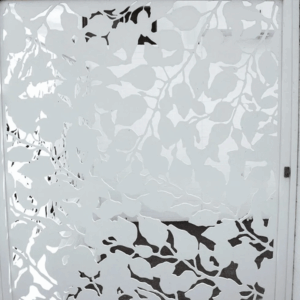
Parents, teachers, and facility managers want one thing from outdoor furniture: peace of mind. When you install an aluminium bench in a playground or school quad, you’re not just ticking a box for seating—you’re signing off on children’s safety. Below is a no‑nonsense guide to the big questions: Are aluminium benches safe for kids? What should you look for in design, finish, and maintenance to keep them that way?
Everything here sticks to Australian grammar and spelling, skips the fluff, and uses plain, practical language you can act on.
What Makes Seating “Kid‑Safe”?
Before we get into the metal itself, let’s define “safe” for junior users.
- No sharp edges or pinch points that can cut tiny fingers.
- Stable under active loads—kids sit, stand, and jump, often on the same spot.
- Non‑toxic surfaces because hands end up in mouths.
- Manageable surface temperature so bare legs and arms won’t burn or freeze.
- No entrapment gaps where limbs, clothing, or ponytails get caught.
- Slip‑resistant finishes for wet days and rubber‑soled shoes.
- Compliant with Australian Standards such as AS 4685 (playground equipment) and AS 1428 (accessibility).
If your aluminium bench meets these points, you’re on the right track.

Why Aluminium Is a Front‑Runner for Kid‑Friendly Seating
Plenty of materials can build a bench, but aluminium offers safety advantages you can’t ignore.
- Corrosion resistance: The alloy’s natural oxide layer stops rust, eliminating flaky surfaces and weak joints that twist under little feet.
- Light weight: Easier to install close to play zones without heavy cranes—less site disruption around curious children.
- Non‑sparking and non‑magnetic: Reduces risk during science projects or metal toy play.
- Recyclable: A bonus for schools teaching sustainability.
In short, a well‑made aluminium bench is hard to break, stays smooth for decades, and doesn’t introduce nasty chemicals into young ecosystems.
Common Safety Hazards in Playground Seating
Even the best aluminium bench can fail if the design overlooks these risks.
- Exposed fastener heads: Kids love spinning bolts; loose parts create wobble points.
- Heat build‑up: Dark powder‑coat can heat above 55 °C under summer sun.
- Slippery surfaces: Brushed or glossy finishes become skating rinks after rain.
- Trip hazards: Legs that flare out into run‑paths catch busy little feet.
- Gaps wider than 8 mm: Small enough for fingers to wedge, big enough to worry parents.
Knowing the traps means you can spot them on supplier drawings before signing anything.
Design Features That Protect Children
When reviewing an aluminium bench catalogue, check for these kid‑safe inclusions.
- Radiused edges: A five‑millimetre minimum radius helps avoid cuts and bruises.
- Integral armrests: They stop toddlers sliding off ends and give older users leverage to stand.
- Rounded slats: Reduce edge heat and shed water quickly, cutting slip risk.
- Hidden fixings: Tamper‑proof Torx screws or welded frame joints keep curious hands out.
- Seat height around 450 mm: Low enough for primary students, compliant with AS 1428 for universal design.
- Adequate backrest clearance: Prevents head and limb entrapment (no more than 30 mm, no less than 100 mm gap).
Surface Temperature: Keeping Benches Touch‑Safe
Metal gets hot—every Aussie knows that. The key is controlling extremes.
- Light powder‑coat colours reflect heat; ivory or eucalyptus green stays cooler than charcoal.
- Perforated or slatted seats let air circulate, shedding stored warmth.
- Shade planning: Position benches under shelter sails or trees where possible.
- Surface testing: Ask suppliers for temperature data collected under Australian sun, not overseas lab conditions.
A well‑spec’d aluminium bench can remain 10–15 °C cooler than a steel plate painted black—enough to prevent minor burns.
Finishes and Coatings: More Than Cosmetics
Kids chew on sleeves, lick icy poles, and drop food. That means any bench they touch should be safe enough to eat off (within reason).
- Certified powder‑coats meet AS 3715 for adhesion and UV resistance; choose polyester powders that are BPA‑ and lead‑free.
- Anodised layers produce a hard, mite‑resistant shell with no flaking paint.
- Textured powders improve grip and hide scratches from scooters or skateboards.
- Colour psychology: Bright primaries aid way‑finding and energise play zones, while muted greens blend into quiet rest areas.
Always request a copy of the coating data sheet to confirm non‑toxic credentials.

Maintenance: The Often‑Forgotten Safety Pillar
A shiny new aluminium bench can turn hazardous if maintenance lapses.
- Monthly wash‑down with mild detergent removes grime, bacteria, and sugary spills.
- Quarterly bolt torque check keeps frames solid under jumping feet.
- Annual coating inspection: Touch up chips with matching powder or wet‑spray paint to block corrosion.
- Graffiti response plan: Use pH‑neutral cleaners; strong solvents can soften the coating and raise a rash on kids’ skin.
- Record‑keeping: A simple spreadsheet logs dates, problems found, and fixes applied—a lifesaver during audits or insurance claims.
Regular care not only extends life but preserves the bench’s original kid‑safe features.
Final Thoughts
So, are aluminium benches safe for kids? Yes—provided you choose wisely, install correctly, and maintain regularly. Aluminium’s natural corrosion resistance, combined with clever kid‑focused design features, makes it one of the safest seating options for Australian playgrounds, school quads, and sport precincts.
By zeroing in on rounded edges, tamper‑proof fixings, non‑toxic coatings, and solid structural specs, you’ll create a space where children can sit, play, and explore without unnecessary risk. And that’s a win for parents, teachers, facility managers, and—most importantly—the kids themselves.




